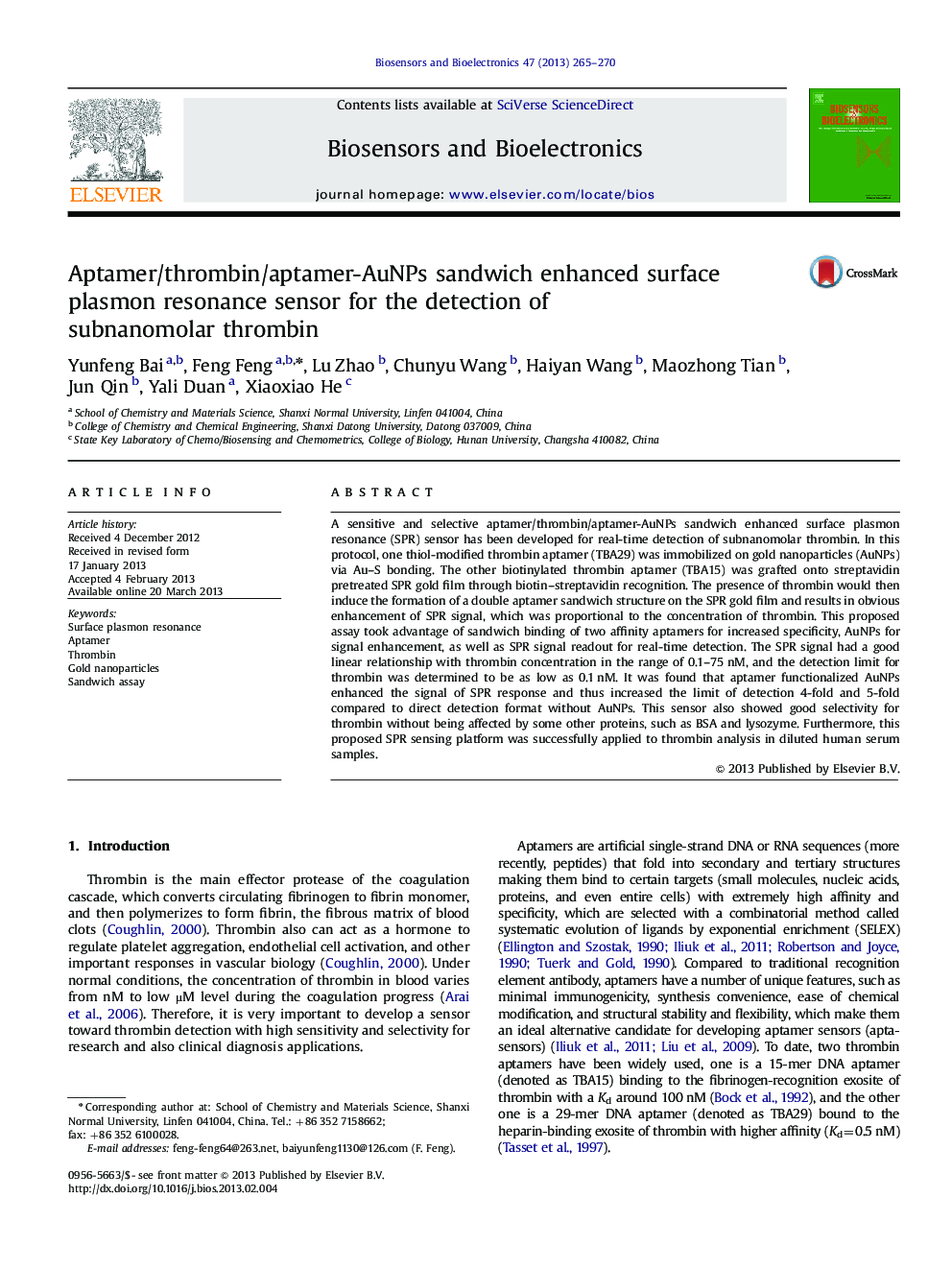| Article ID | Journal | Published Year | Pages | File Type |
|---|---|---|---|---|
| 866969 | Biosensors and Bioelectronics | 2013 | 6 Pages |
•A novel SPR aptasensor for sensitive thrombin detection was developed.•This approach was using double aptamers as recognition elements as well as gold nanoparticles to enhance the signal.•By using this approach, a detection limit of 0.1 nM and a linear range of 0.1–75 nM were successfully achieved for thrombin.•Nonspecific interference from BSA and lysozyme were negligible.•The approach was successfully applied to detect thrombin in diluted human serum sample.
A sensitive and selective aptamer/thrombin/aptamer-AuNPs sandwich enhanced surface plasmon resonance (SPR) sensor has been developed for real-time detection of subnanomolar thrombin. In this protocol, one thiol-modified thrombin aptamer (TBA29) was immobilized on gold nanoparticles (AuNPs) via Au–S bonding. The other biotinylated thrombin aptamer (TBA15) was grafted onto streptavidin pretreated SPR gold film through biotin–streptavidin recognition. The presence of thrombin would then induce the formation of a double aptamer sandwich structure on the SPR gold film and results in obvious enhancement of SPR signal, which was proportional to the concentration of thrombin. This proposed assay took advantage of sandwich binding of two affinity aptamers for increased specificity, AuNPs for signal enhancement, as well as SPR signal readout for real-time detection. The SPR signal had a good linear relationship with thrombin concentration in the range of 0.1–75 nM, and the detection limit for thrombin was determined to be as low as 0.1 nM. It was found that aptamer functionalized AuNPs enhanced the signal of SPR response and thus increased the limit of detection 4-fold and 5-fold compared to direct detection format without AuNPs. This sensor also showed good selectivity for thrombin without being affected by some other proteins, such as BSA and lysozyme. Furthermore, this proposed SPR sensing platform was successfully applied to thrombin analysis in diluted human serum samples.
